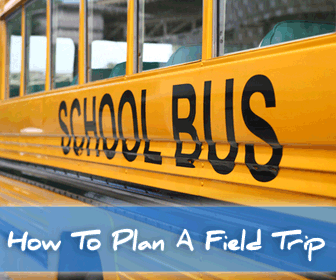How To Plan A Field Trip Your Learners Will Never Forget


Following, find some ideas for making the most out of your field trip for your students once the bus is parked and you are back in the classroom.
Make Time For Discussion
Though you probably gave your students a chance to talk with each other while on the trip, setting aside a specific time to talk about the trip once you are back in the classroom can further the benefits for your students. Either in groups or as a class, give your students an opportunity to share any observations they made during or after the trip. Also ask questions like the following: What did you learn? What did you experience while on the trip that surprised you? What was a challenge for you at your current language level? Were you able to understand and interact with the native speakers you met? What would you suggest keeping the same for next year’s trip? What would you recommend changing? Not only will this discussion give your students a chance to use language and vocabulary they learned on the trip, the feedback will also help you as you plan class trips in the future.
Replicate and Recreate
Another way to use new vocabulary or language structures in a realistic context is to recreate the field trip event in your classroom. For example, if you took a trip to the zoo, recreate a zoo in your classroom. If you visited a museum, create a classroom museum using student art. Was there a presenter to whom your class listened? If so, have someone in your class give a presentation to another class in the school. Did your students read informational signs about the items they saw? Have them write their own signs to display around the classroom. Did your students see a demonstration of some kind? Have each student do a similar demonstration for your class or a visiting class. By reinterpreting the field trip experience for your classroom, your students will solidify in their minds the information and language that they used while on the trip. Be creative in what you do, and make sure you are getting your students to use their language skills. No matter what your trip involved, you should include the vocabulary and language that the trip required of your students.
Give Thanks
Many times, volunteers are the most informative sources at a field trip location. People who are passionate enough about a subject to donate their time to an organization are a terrific resource for information and history. Take some time to thank the people who assisted your class on your field trip. Your class can accomplish this by writing thank you cards or letters to the volunteers. Make sure that while you are on your trip you get the appropriate contact information about any volunteers or staff who spent time with your class. Then review with your students how to write thank you cards. Encourage each student to include something that the volunteer did or said that made a particularly strong impact or impression him or her when writing the thank you card. Then bundle all the cards together and send them off to your volunteer.
Share the News
A class field trip can also be a good jumping off point for creating a class newsletter. Individual students will be able to share specific information that they learned while on the trip, and you can include pictures that you took of your class. By having your students work together on articles, you can also include conversation practice in the project. Once the newsletter is written, copy it and send it home to families to tell them about the events of the day or distribute the paper to other classes in your school. If you share your class newsletter with another class, they may choose to do the same for you. You could also simply copy the paper and make it available to your class and to the teachers at the school. Your students will be encouraged to see their words in print and you may give other teachers some topics of conversation that they can use the next time they work with your ESL students.
The Good, the Bad and the Ugly
Finally, after taking your class on a field trip, be sure to invest some of your own time into future class experiences by debriefing the field trip experience as a whole. Taking time to jot down some notes about what was good during the day will remind you to include those elements in the next trip or next year when you do this trip again. Were any activities particularly successful? Did your class enjoy one part of the day more than another? What elements of the day got your students speaking the most? Likewise, writing down anything that may have been bad on that day will be a reminder to avoid those types of experiences in the future. Should you have brought brown bag lunches? Was a particular tour guide too difficult for your students to understand? Finally, think about any improvements you might suggest for this or another trip in the future. Was there certain vocabulary that your students should have studied before the trip? Do you need to find a different method of transportation to your destination? Taking time to jot these ideas down shortly after your trip may save you stress as well as heap on success for future trips. Then put all your notes into a file labeled with the destination and any other materials or information you collected throughout the planning and trip for easy reference next year.
Do not let the experience die once the travel bus closes its door. Follow up with these or other activities to ensure every possible success from your field trip!